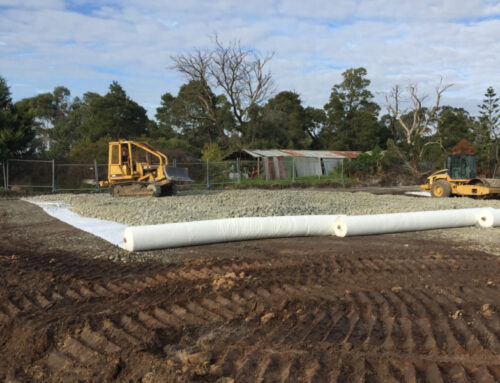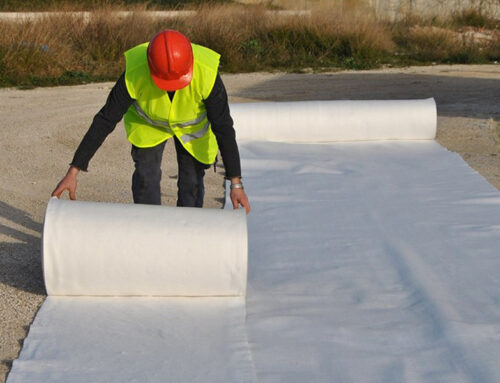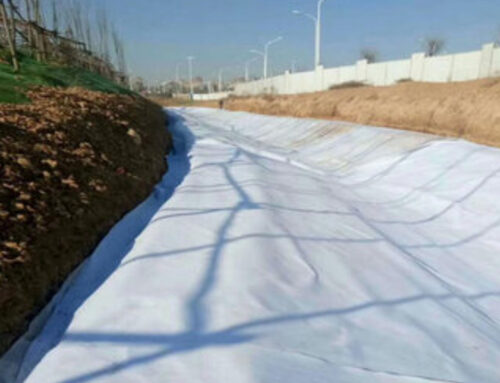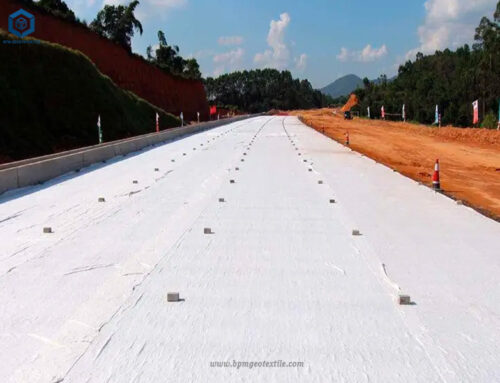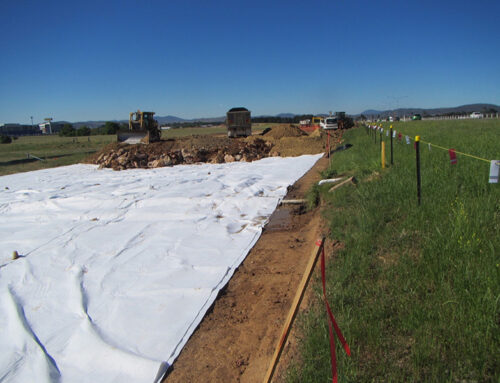How to install geotextile fabric is a key problem in geo environmental engineering. Geotextile fabric is directly used in the form of composite construction element, sometimes it is applied as geotextile package which can be filled with sand or other materials. The geotextile is typically made from high quality polyester staple fiber. BPM geotextiles and related products have many applications including roads, airfields, railroads, embankments, retaining structures, reservoirs, canals, dams, bank protection, coastal engineering.
BPM has strict quality management system to ensure its geotextile product to keep finest and uniform quality. We have standard industrial testing equipment to inspect our geotextile product quality in preset procedure. All BPM brand geotextiles had been certificated by the ISO9001, ISO14001, TUV, Soncap, SASO and BV certificates and passed the test of SGS and Intertek etc.
In recent years, geotextile fabric has been widely used in rock engineering, especially in flood control and emergency engineering. The following are the suggestions on how to use geotextile fabric according our geotextile project experiences. We are pleased to share with you.
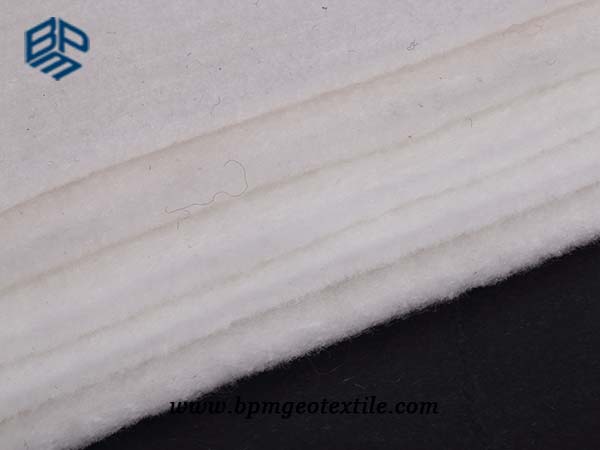
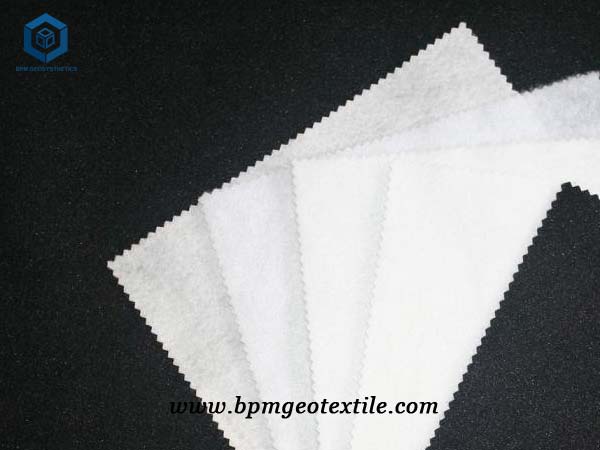
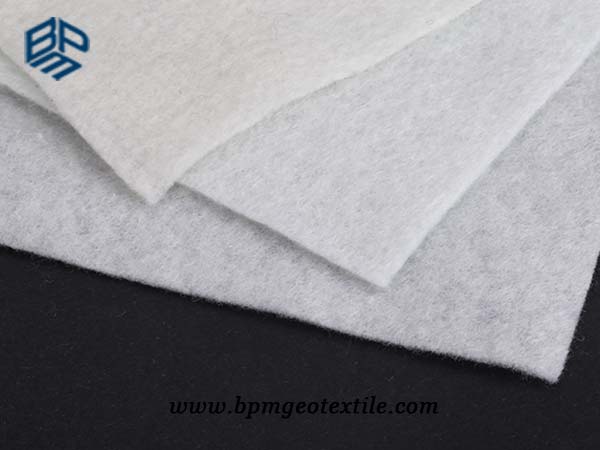
1. How To Preparation Geotextile Fabric Before Installation?
Proper preparation of geotextile fabric is crucial to ensure its integrity and effectiveness during installation. Here are the recommended steps for preparing geotextile fabric before installation:
1.1 Avoid damage
Geotextile fabric should be handled with care to prevent any damage. Avoid dragging or dropping the fabric, as it can lead to tears or punctures. Handle it gently during transportation and storage.
1.2 Store in a flat place
Prior to installation, store the geotextile fabric in a flat area, free from stagnant water. This helps to maintain the fabric’s shape and prevents potential water damage.
1.3 Ensure visibility of specifications
The specifications of the geotextile fabric, such as weight, roll size, and other relevant details, should be clearly visible. This allows for easy identification and verification during installation.
1.4 Protect from UV light
Geotextile fabric should be shielded from direct exposure to ultraviolet (UV) light. Cover the fabric with an opaque material, such as a tarp or non-transparent sheet, to prevent UV degradation, which can weaken the fabric over time.
1.5 Repair damaged fabric
Inspect the geotextile fabric for any existing damage or tears. If any damage is detected, it should be repaired before installation. Minor damages can be patched using appropriate repair materials and techniques to ensure the fabric’s integrity.
1.6 Discard severely damaged fabric
Geotextile fabric that is severely damaged or compromised beyond repair should not be used. It is essential to prioritize the use of undamaged and structurally sound geotextiles for optimal performance and longevity.
1.7 Avoid chemical exposure
Geotextile fabric that has been exposed to leaking chemical reagents should not be used in projects. Chemical exposure can negatively affect the fabric’s properties and compromise its performance. Such fabric should be discarded or appropriately disposed of according to local regulations.
2. How To Connect Geotextile Fabric?
- The installation of geotextile is usually done by lap, suture and welding. The width of suture or welding is usually more than 10cm, and the width of lap is usually above 20cm. Long- exposed geotextile fabric shall be welded or sutured.
- All stitching must be carried out continuously (spot stitches are not allowed). Geotextiles must overlap at least 15cm. The small stitch is at least 2.5cm from the edge of the exposed material.The seams are made of resin materials, which are more resistant to chemical damage and UV radiation. If the missing needle is found, it must be re-stitched at both ends. Sutured geotextiles shall be properly protected,avoiding soil. The connection of the geotextile can be divided into natural lap, seam or welding according to the terrain and function. At the bottom of the landfill, if the length of the breach exceeds 10% of the width, the damaged part must be cut off before stitched at both ends.
- Consider the mixed use of the geotextile and geomembrane, the geotextile on the upper layer is connected by stitch or hot jet welding. Hot jet welding is the preferred connection method. Heating the joint with a hot air gun at high temperature, which makes the geotextile to reach the molten state and stick together firmly. In wet weather, the geotextiles shall be connected by stitch. Double – wire stitching was performed with anti – chemical UV suture line. The minimum width at suture is 10cm, natural lap is 20cm, and hot jet welding is 20cm.
3. How To Install Geotextile Fabric?
To install geotextile fabric effectively, follow these steps to ensure the geotextile fabric can be properly installed, providing effective separation, filtration, and reinforcement in various construction and civil engineering projects. Always adhere to project specifications and consult with field supervision engineers for specific guidelines and requirements.
3.1 Prepare the surface
Ensure that the installation surface is flat and leveled. Remove any debris or protrusions that could damage the geotextile fabric. Properly account for deformation allowance, considering any anticipated settlement or movement.
3.2 Manual rolling and installation
Begin by manually rolling out the geotextile fabric onto the prepared surface. Take care to maintain a flat and even installation, avoiding wrinkles or folds. Smooth out the fabric as you progress.
3.3 Bury geotextile layers
Both the layer of geotextile fabric above and below the impermeable geomembrane should be buried in the anchorage groove, along with the impermeable geomembrane. This ensures a secure and integrated installation.
3.4 Proper joint alignment
Ensure that the joints of the geotextile fabric and geomembrane intersect with the slope line. When there is expected stress or load, maintain a stitching distance greater than 1.5 meters between joints. This enhances the structural stability and load distribution.
3.5 Anchoring on slopes
For sloped areas, anchor one end of the geotextile fabric and allow it to release naturally by gravity. This technique keeps the geotextile fabric taut against the slope, ensuring proper functionality and preventing sagging or slackness.
3.6 Cover with sandbags
Use sandbags to cover the geotextile fabric during installation. This helps to secure the fabric in place and prevent movement or uplift caused by wind or other forces. Keep the sandbags in position until the upper layer or subsequent construction layers are laid.
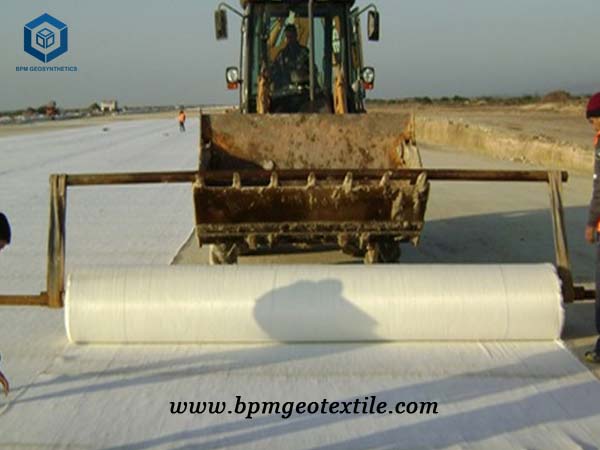
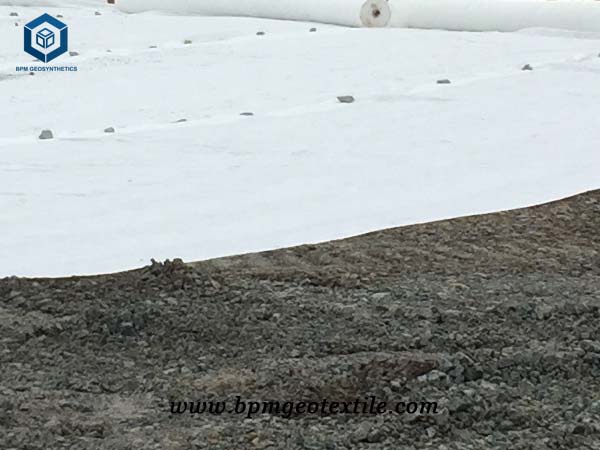
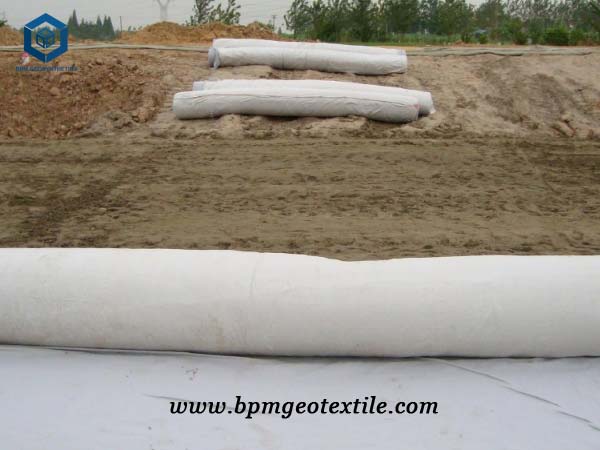
4. How To Check The Installed Geotextile Fabric?
- Base layer checking. Whether it is flat and solid? If there is foreign matter? Treat it properly in advance.
- Test to install. According to the field situation, determine the size of geotextile fabric accurately before cutting.
- Checking whether the width is suitable and the joint should be smooth and loose.
- The joints of the geotextile should be glued with a hot air gun at suitable position.
- When stitching the joint, the stitching line should be straight and the needle should be even.
- Checking whether the geotextile is laid flat or damaged.
- In case of non-compliant situation, repairing it timely.
- All pieces and seams of geotextile fabric should be inspected after installation. Defective sheets and sutures must be clearly marked and timely repaired.
- It is necessary to repair worn geotextiles by heat connecting geotextile patchs, whose length are at least 200mm longer than defect edges in all directions.The thermal connection shall be strictly controlled to ensure that the patch and geotextiles are closely combined.
- Making sure that all damaged areas have been marked and repaired immediately and whether there is any foreign material that may cause damage to the geotextile fabric no foreign material, such as fine needles or small nails, etc.
5. How To Repiar Damaged Geotexitle?
- The patches are made from the same material as geotextile fabric.
- In the bottom of the landfill, if the crack width exceeds 10% of the coil, the damaged part of the geotextile should be removed before connected; When happens on the slope, take place the damaged one by new one.
- The working shoes and tools cannot damage the geotextile. No smoking on the geotextiles or do not poke them with sharp tools.
- Checking the appearance to ensure that the geotextile material is in good condition. Do not open the packaging film if not in use.
- The geotextile should be inspected and approved timely when arrived. The code for construction and acceptance of geotextiles should be strictly
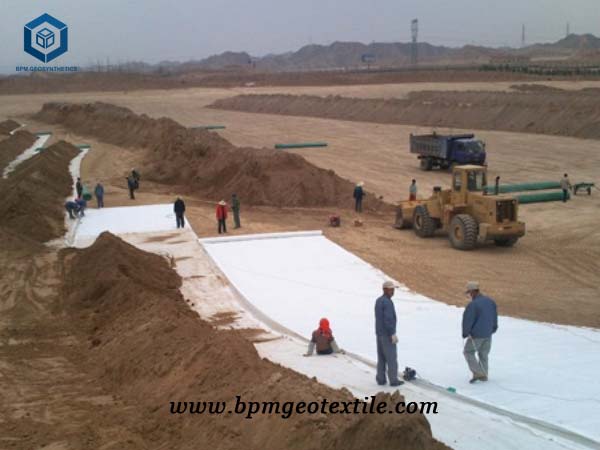
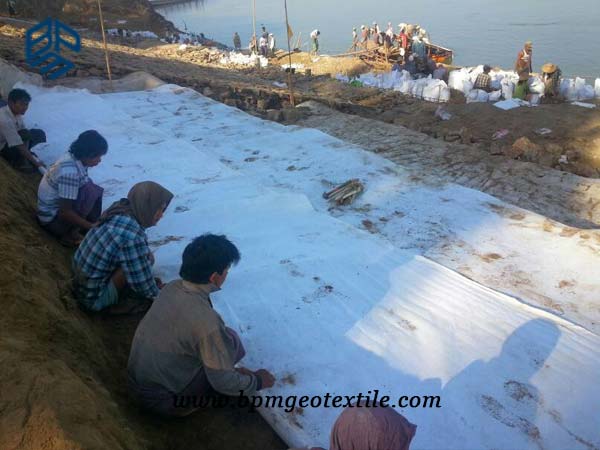
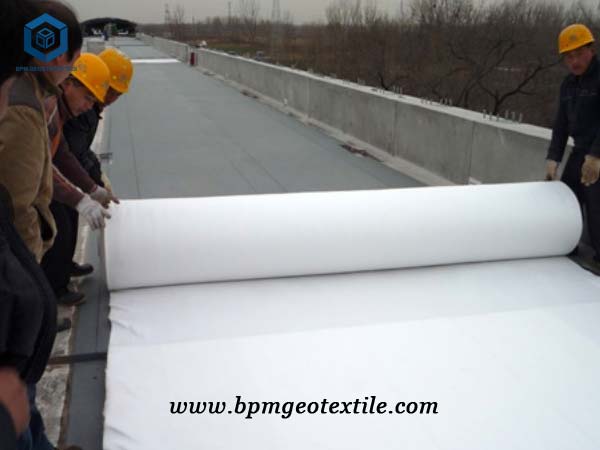
5. About BPM Geotexitle
BPM had provided many types of high quality, geotextile to over 81 countries. Our main customers are from Australia, France, Sweden, UK, Hong Kong, Hungary, New Zealand, Poland, Mexico, Ecuador, Brazil, Pakistan, Bangladesh, Thailand, Vietnam, Malaysia, Indonesia, Singapore, Philippines, Sri Lanka, India, UAE, Saudi Arabia, Qatar, Kenya, Ghana, Ethiopia, Somalia, Nigeria, South Africa, Swaziland, Mongolia etc.
BPM Geotextile is not only fabricating high quality geosynthetics products, but also providing professional design and installation service. OEM and ODM are also available.
If you have any questions or inquiries, please contact us, we will reply as soon as possible.

